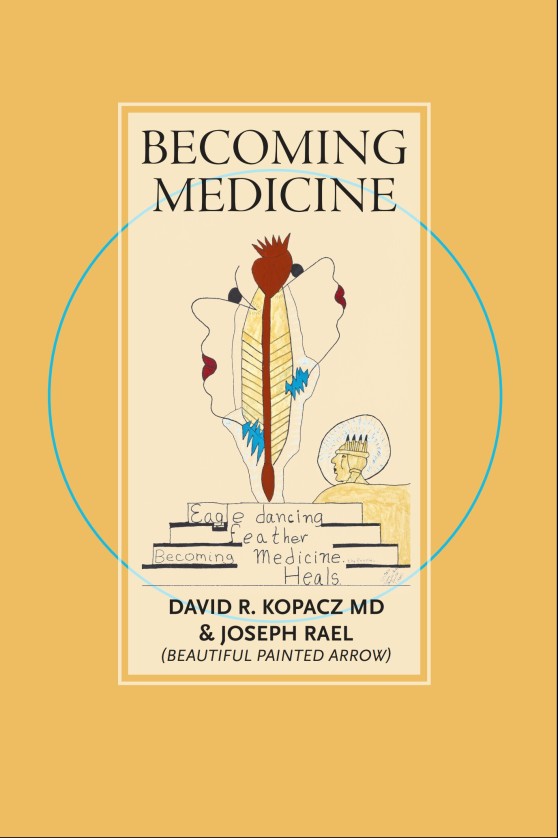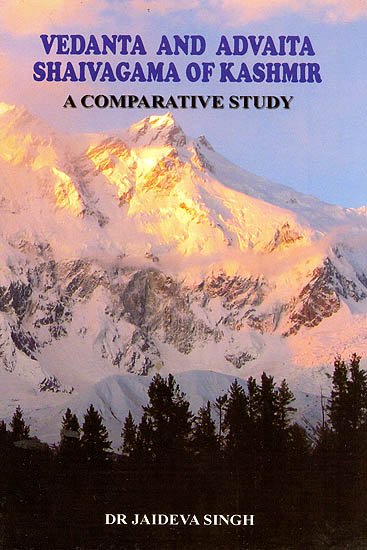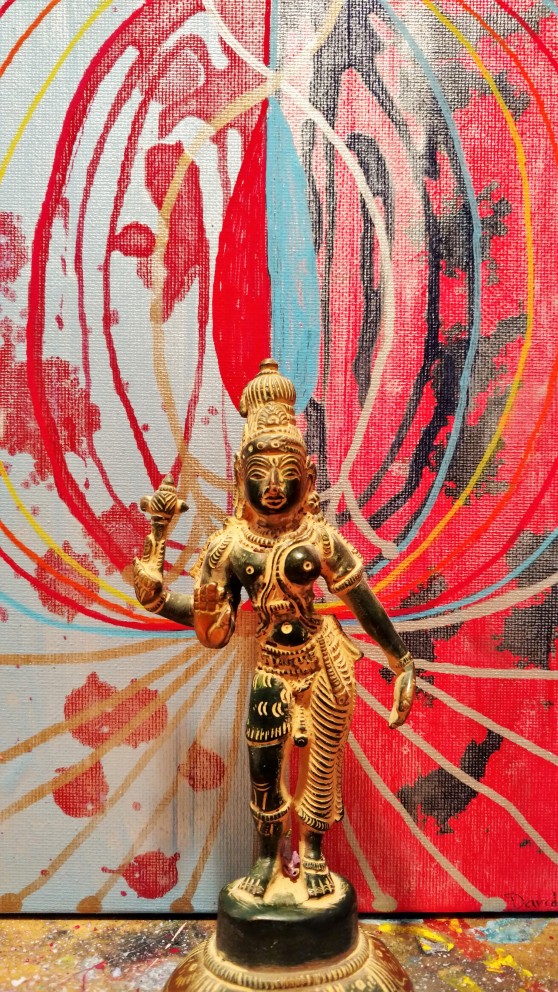PART I: Introduction

This is a review (and expanded discussion) of two short books by Jaideva Singh (1893-1986), Indian musicologist, philosopher, and translator of many texts of Kashmiri Shaivism. Singh blended two careers in music and as a translator and philosopher of sacred texts. I could not find much in English about his life, the same biography appeared in Wikipedia and on a number of other sites. There is an edition of Sruti Magazine devoted to his life (Sruti, e-Issue 17, November 2013 – note that the page numbers are not always sequential in the pdf and some page numbers appear to be missing, e.g. #34). Dr. M.R. Gautam writes in an article, “A Great Savant of India,” that Singh was born in what is now known as Uttar Pradesh and that his grandfather, Udit Narayan Singh was beheaded by the British, his father was also supposed to be killed, but at 2 years of age, Gopal Narayan Singh was hidden under burnt wheat chaff in the village (21). During the course of Thakur Jaideva Singh’s studies he came under the influence of Theosophist, Annie Besant, as well as Babu Bhagwan Das, and that he became a vegetarian. In an odd twist, similar for Gandhi, it was through a Westerner that Singh came to a deeper study of Sanskrit and original sacred texts. He met a German scholar who encouraged him to study Sanskrit, which in fact he did. His life-long love of music led him to be the Chief Producer at All India Radio for about six years. In retirement he got down to studying and writing. He began to study tantra and yoga under Mahamahopadhyaya Pandit Gopinath Kaviraj. He also studied with Swami Lakshman Joo and this collaboration led to English translations of a number of Kashmiri Shaivite texts, including: Pratyabhijnahrdayam: The Secret of Self-Recognition, Vijnanabhairava or Divine Consciousness: A Treasury of 112 Types of Yoga, Siva Sutras: The Yoga of Supreme Identity, Spanda-Karikas: The Divine Creative Pulsation, Para-trisika-Vivarana by Abhinavagupta: The Secret of Tantric Mysticism. The two books that this review will focus upon are Vedanta and Advaita Shaivagama of Kashmir: A Comparative Study and An Introduction to Madhyamaka Philosophy. Both of these books are far more accessible than the major translations listed above.

Gautam writes:
Thakur Saheb was a voracious reader. His thirst for knowledge was so great that he wished to study the great works of renowned scholars on mysticism, music, philosophy and other subjects in their original versions. Therefore he learnt Greek, Latin, Persian, French and German in addition to English, Sanskrit, Pali, Hindi, Bengali, Marathi, Gujarati and Urdu…and his library consisted of 6000-7000 rare books, (Gautam, Sruti, 24-25).
Singh was a true scholar of world religions.
He found a striking closeness of spirit between Christian and Hindu mysticism, as also Sufism. His mind was thus marked by the openness and universality which are the signs of great spirits. Being rooted in his own tradition, he accepted the truth, from whichever source it came. This, his openness, was also connected with the fact that he was deeply influenced by the thought of A.K. Coomaraswamy, with whom he entertained correspondence, as well as by Rene Guenon and the traditionalist school. Besides, he was a theosophist of a very free and non-sectarian type,” (Unknown author as previous page missing in pdf, possibly Dr. Bettina Baumer, Sruti, 35).
I came to reading Jaideva Singh after a conversation with Richard Miller, PhD, the developer or iRest (Integrative Restoration), an adaptation of yoga nidra which has been studied with military veterans and active duty military personnel as well as other populations. After reading Richard’s books (Yoga Nidra: Awaken to Unqualified Presence Through Traditional Mind-Body Practices and The iRest Program for Healing PTSD: A Proven-Effective Approach to Using Yoga Nidra Meditation and Deep Relaxation Techniques to Overcome Trauma), I was curious as to the historical background and spiritual tradition that the concepts came out of and Richard mentioned a few different sources, including those of Jaideva Singh. I made my way, slowly through Pratyabhijnahrdayam, Vijñānabhairava, Siva Sutras, Spanda-Karikas, Para-trisika-Vivarana. These texts are dense with layers of the original Sanskrit texts (generally from around 800-1200 CE), commentaries by ancient sages, and then modern commentary. I found them difficult, but worthwhile and found various gems throughout. I then turned scholarly texts by Western professors on the subject and found Paul Muller-Ortega’s The Triadic Heart of Siva: Kaula Tantricism of Abhinavagupta in the Non-dual Shaivism of Kashmir and Mark Dyczkowski’s The Doctrine of Vibration: An Analysis of the Doctrines and Practices Associated with Kashmir Shaivism illuminating.
There are a number of contemporary authors studying these same ancient texts and offering contemporary translations for a more general, than academic and esoteric, audience. Daniel Odier’s Yoga Spandakarika: The Sacred Texts at the Origins of Tantra is very readable and accessible. I have recently read once through Lorin Roche’s The Radiance Sutras: 112 Gateways to the Yoga of Wonder and Delight, and this includes a review of previous translations and tracing the lineages from Lakshman Joo, including Jaideva Singh’s Vijñānabhairava. I am currently making my way through Christopher D Wallis’ The Recognition Sutras: Illuminating a 1,000-Year-Old Spiritual Masterpiece, which is strikes a middle ground between academic rigour and accessibility.
Why have I spent so much time reading through these translations of ancient texts of the Kashmiri Shaivite tradition? This tradition is also one of the major sources of the concept of “Tantra,” which is a more popular term. Tantric traditions are found in various branches of Hinduism and Buddhism. Two of the primary reasons I have immersed myself in these writings and teachings are: non-dualism and sound mysticism (the relationship of sound, word, creation, and reality). The primary focus of this review is on non-dualism, we will have a brief aside on sound mysticism and then focus on non-dualism and two of Jaideva Singh’s books for the remainder of the review.

Joseph Rael (Beautiful Painted Arrow) & David Kopacz
My work with Joseph Rael (Beautiful Painted Arrow), a Native American mystic and visionary, who comes from the Southern Ute and Picuris Pueblo cultural traditions, has led me to expand my studies into various cultures and traditions to try to understand and contextualize some of his teachings. Joseph teaches that the sound energy of the word contains meaning. The signifier (the word sound) is not separate from the signified (the meaning of the word). Joseph teaches me to listen to, rather than think about, reality (this is a challenge for me as an academic and Westerner). Joseph often speaks about the differences between Western languages which are noun-based and focus on people, places, and things – this is great for science and for dividing reality up into separate pieces, but it loses something of the heart and soul and living spirituality of verb-based languages. Many indigenous languages are verb-based – they focus on processes, flow, and relationship rather than on fixed, separate objects. This has profound and far-reaching consequences, the most tangible being the European view of land as a “thing” to be owned” rather than Mother Earth being a living being who is our source and to whom we are all interconnected and interrelated. The most esoteric, and yet perhaps the most fundamental, of Joseph’s teachings is: “we do not exist.” This is a koan-like statement that I continually turn over in my mind and heart and which I have come to understand in many different, multi-layered ways. One way of understanding this statement that we do not exist is that we do not exist as nouns (as fixed, concrete, boundaried objects), but that we do exist as a kind of continually changing, flowing, and pulsating verb that is in relation with everything. The Native American concept of interrelation is quite well-known, for instance the Lakota saying mitakuye oyasin, often translated as “we are all related.” Joseph takes this interrelation a step further to the point that we do not exist in separation, but we do exist in a kind of unity in which there is no difference between the individual and what Joseph calls Vast Self (God, Creator, the One Being creating and observing reality).
Joseph is very interested in science and is always giving me references to articles he reads in various science magazines about dark matter and dark energy. These are forces that “don’t exist” from the perspective of our everyday senses, yet we can infer through scientific observation and study that these unseen forces do exist and influence visible reality. This parallels Joseph’s teachings around ordinary and non-ordinary reality. Ordinary reality is perceptual reality and non-ordinary is the reality that we can reach through intuitive and spiritual methods that exists in a different way. Much of his teaching with me has been on being able to move into a state of non-ordinary reality and then back. My sense is that, ultimately, non-ordinary reality is the source of the momentary manifestation of ordinary reality.
Sound is one way that we can travel from ordinary to non-ordinary reality. Ordinary reality is not separate from non-ordinary reality, it is a manifestation of it. The sound we hear with our ears contains within it esoteric teachings about reality. Joseph speaks of principle ideas that various sounds contain and that more complex concepts are created out of the building blocks of the principle ideas contained within the sounds. For instances, when Joseph teaches the medicine wheel each direction has a vowel sound associated with it and each vowel sound manifests a principle idea. A (ah) is east, mind, spring, purity; E (eh) is south, emotion, summer, placement; I (ee) is west, body, autumn, awareness; O (oh) is north, spirit, winter, innocence. Thus, the outer direction of east corresponds to the inner direction of mind, these are not two separate things, but inner and outer manifestations of the principle idea of purity.

Joseph Rael’s Medicine Wheel, Rendition by David Kopacz ©2016
The four inner and outer directions of the medicine wheel are interrelated, just as the four seasons are interrelated – they are different “things” in a way, but they do not exist in and of themselves, but only in relationship to each other, just as what we call “winter” cannot exist without a relationship with “summer.” Joseph says that the reason we have war and violence is because we misperceive ourselves as existing and separate from “others,” whereas we do not really exist as separate beings, but only in relationship with others. We talk about the medicine wheel and coming home from war to peace in our book, Walking the Medicine Wheel: Healing Trauma & PTSD. Using the four directions of the medicine wheel, we can bring ourselves back into harmony internally and externally, bringing peace to ourselves and to the world as we come back into interrelationship and interbeing.
The next level of work I am doing with Joseph starts at the end of Walking the Medicine Wheel and continues on in our forthcoming book, Becoming Medicine. This is the movement from interrelationship to oneness and unity: non-duality. After walking the four inner and outer directions of the medicine wheel, there is a further journey – which is the journey of the mystic, the visionary, and the shaman – into the center of the medicine wheel, the very heart of reality. Joseph teaches that the sound of the center is: U (uu) center, heart, carrying. Moving into the heart of the medicine wheel first comes to the level of our personal heart, but as we go deeper it is revealed that our personal heart leads to the universal heart and it is through the universal heart that we are not only interconnected with all of reality, but we are one with it. This is a place of non-duality.

© Joseph Rael
There is a common tension between the spiritual concepts of immanence and transcendence that seems to be found in all major religions. Immanence is the concept that all materially reality contains spirit within it. Transcendence is the concept that there is a spiritual realm that exists above and beyond material reality. As with all dualisms, immanence/transcendence leads to violence and we see this throughout the history of humankind and the history of religion. The ossified teachings of most religions teach that material reality is sinful, evil, or irrelevant (e.g. maya, illusion). The Fall in Christianity teaches us that the body is sinful and evil, that we are trapped in matter that is constantly trying to lead us to sin and that salvation leads to rejecting or controlling the body and being “good” and getting to heaven after death. In dualistic versions of Hinduism and Buddhism, material reality is considered maya, illusion, and that the religious path is found by detaching from the physical and focusing on the spiritual. We can look at secular materialism as a form of radical immanence (without the recognition of the sacred). Capitalism that is unbalanced by another belief/value system teaches us that the ultimate good and goal of life is to accumulate as many things and dollars as possible. Much of the blending of Christianity and Capitalism results in a dualism with a dissociation of business (Capitalism, Materialism) and spirituality (going to church and being “better” than those who don’t go to Church and being “better” than non-Christians). It is a puzzling observation that the “founders” of religions are generally mystics and visionaries, but later on the followers lose the mystical thread of living spirituality and fall prey to dualistic conceptions of us/them that leads to so many inequalities and wars. Consider the fact that Jesus in the Bible cannot in anyway be considered a Capitalist or Materialist. He is far more of a Socialist, but ultimately he was a renunciate (an anti-Materialist) – who rather than amass wealth and belongings taught that we should love one another and not cast the first stone of dualistic judgment. Sufis, Tantriks, Christian mystics all broke down the boundaries of dualism that divide us and separate us from the Ultimate spiritual Reality. Native American teachings highly value immanence, the sacredness of the physical world, which includes our physical being. Joseph Rael also includes transcendence, that physical reality is sacred, but it also does not exist and that there is another, non-ordinary reality, which is hidden within ordinary reality. He does this in a way that does not create dualism, but rather is non-dualistic.








